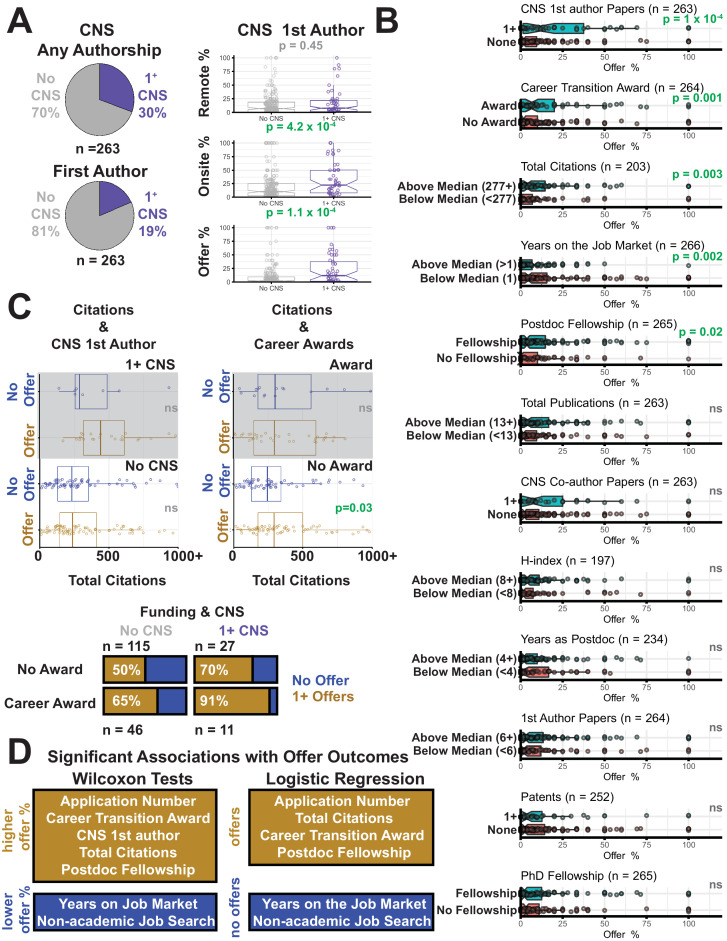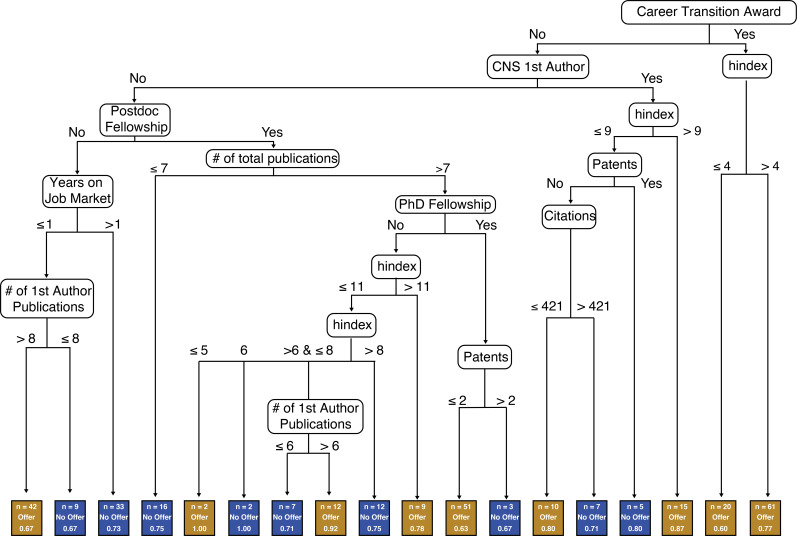Figure 5. Traditional research track record metrics slightly impact job search success.
(A) Pie charts show the fraction of candidates with authorship of any kind on a CNS paper (purple) versus those without (gray), and fraction of candidates who were first author on a CNS paper (purple) versus those who were not (gray). Distributions of off-site interviews (top; p=0.33), onsite interviews (middle; p=2.70×10−4) and offers (bottom; p=1.50×10−4) for applicants without a first-author paper in CNS (gray), and those with one or more first-author papers in CNS (purple; Supplementary files 11, 12, 17). (B) Significant associations were found between offer percentage and the number of first-author papers in CNS (top panel, p=1.70×10−3), career transition awards (second panel, p=2.50×10−2), total citations (third panel, p=2.92×10−2), and years on the job market (fourth panel, p=3.45×10−2). No significant associations were found between offer percentage and having a postdoc fellowship (fifth panel), being above the median in the total number of publications (sixth panel), being an author in any position on a CNS paper (seventh panel), h-index (eighth panel), years as a postdoc (ninth panel), number of first-author papers (tenth panel), number of patents (eleventh panel), or graduate school fellowship status (twelfth panel; Supplementary files 6, 7, 9, 10, 11, 12, 13 and 21). (C) The plots show total citations for those without an offer (blue) and those with one or more offers (gold), for all applicants with one or more first-author papers in CNS (top left); for all applicants without a first-author paper on CNS (bottom left); for all applicants with independent funding (top right); and for all applicants without independent funding (bottom right). In two cases the p value is below 0.05. The bar charts show the offer percentages (gold) for the four possible combinations of career award (yes or no) and first-author paper in CNS (yes or no): for applicants with a first-author paper in CNS, p=0.56, χ2 = 0.34; for applications without, p=0.17, χ2 = 1.92). (D) Summary of significant results testing criteria associated with offer outcomes through Wilcoxon analyses (Supplementary file 7) or logistic regression (Supplementary file 24).



